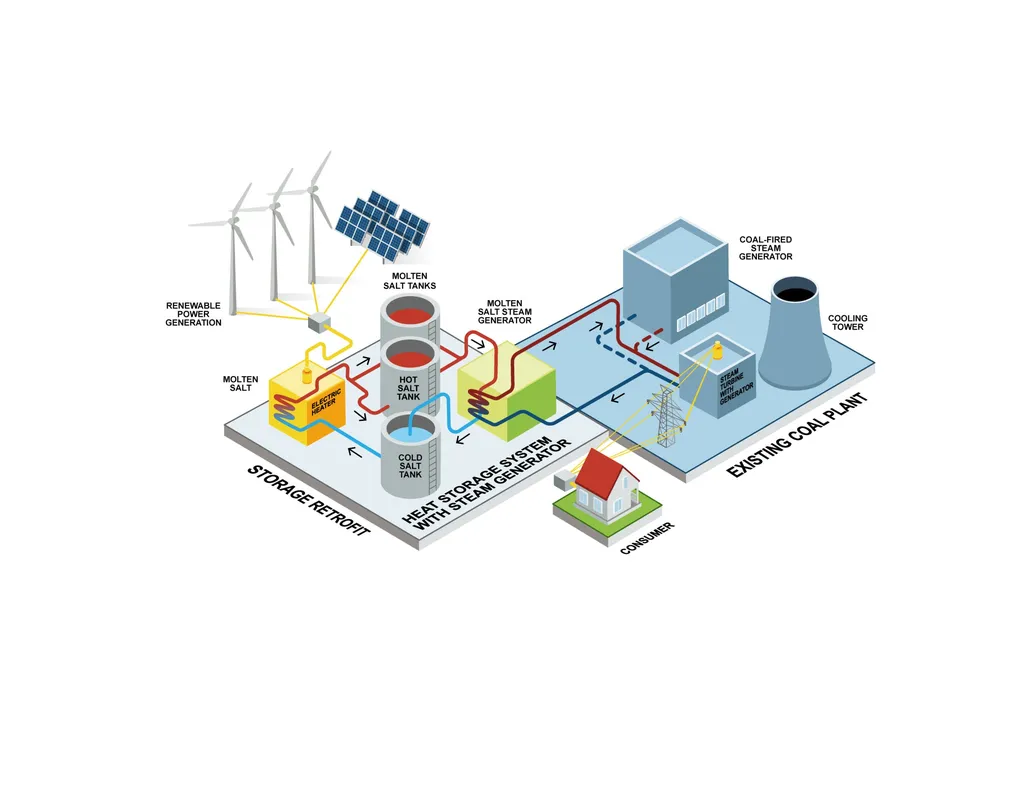Aalborg CSP, a Denmark-based company, has developed technology that could breathe new life into retired coal-fired power plants, converting them into thermal storage facilities for renewable energy. This innovation comes at a critical time, as over 250 coal-fired power plants in Europe are expected to be phased out in the coming years as part of emissions reduction strategies.
The company’s solution involves repurposing existing coal-fired power plants into large-scale energy storage facilities, reusing most of the facility’s installed equipment. This approach not only reduces the environmental impact of decommissioning but also presents a new business opportunity for plant owners.
Jens Taggart Pelle, Aalborg CSP’s vice president of Technical Sales, highlighted the cost-effectiveness of this solution. “The plant owners will save on the costs of decommissioning and dismantling coal-fired power plants, which are scrap if they can no longer produce energy,” Pelle said. He added that repurposing these plants is the most cost-effective solution, as the equipment is already installed and functional for many years to come.
Aalborg CSP’s Power-to-Salt solution uses a Carnot battery to convert electricity into thermal energy. Excess electricity from green energy sources like wind turbines and solar panels is converted into heat, which is then stored in molten salt. When demand for electricity increases, the heat is converted back into electricity, eliminating the need for fossil fuel combustion.
This technology not only strengthens security of supply and balances electricity demand but also retains local jobs, transforming them into clean energy jobs in the operation and maintenance of the future plants.
Aalborg CSP is currently collaborating with AES Bulgaria to explore the possibility of converting a large coal-fired power plant in Bulgaria into an energy storage facility. Ivan Tzankov, president of AES Bulgaria, emphasized the importance of this transformation. “Our state-of-the-art coal-fired power plant represents valuable infrastructure for the country and we are actively working on a solution that aligns with European and Bulgarian energy transition goals,” Tzankov said.
The development of this technology could significantly impact the energy sector, promoting large-scale energy storage as part of grid infrastructure and facilitating the integration of renewable energy sources. As Pelle noted, “I believe there is a great need for decisions that promote large-scale energy storage as part of our grid infrastructure utilizing energy from wind turbines and solar panels. It is essential that the transformation of power plants into green energy storage facilities should be given greater political focus in the coming years.”
This innovation challenges the norm of demolishing and rebuilding, offering a sustainable and cost-effective alternative. It sparks debate on the role of existing infrastructure in the energy transition and the potential of thermal storage technologies in balancing renewable energy supply and demand. As the energy sector evolves, such technologies could play a pivotal role in shaping a sustainable energy future.

